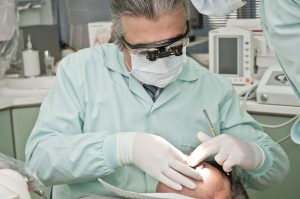
Foods that cling to your teeth promote tooth decay. So when you snack, avoid soft, sweet, sticky foods such as cakes, candy, and dried fruits. Instead, choose dentally healthy foods such as nuts, raw vegetables, plain yogurt, cheese and sugarless gum or candy.
When you eat fermentable carbohydrates, such as crackers, cookies, and chips, eat them as part of your meal, instead of by themselves. Combinations of foods neutralize acids in the mouth and inhibit tooth decay. For example, enjoy cheese with your crackers. Your snack will be just as satisfying and better for your dental health. One caution: malnutrition (bad nutrition) can result from too much nourishment as easily as too little. Each time you eat, you create an environment for oral bacteria to develop. Additionally, studies are showing that dental disease is just as related to overeating as heart disease, obesity, diabetes, and hypertension. So make a habit of eating too much of just about anything, too frequently, should be avoided.
If you, your family or friends need dental care, we would be honored to provide you with state-of-the-art dental care in our modern dental practice. Refer someone you love to someone you trust!
Presented as a service to the community by Doctors Hoover and Yanda,
39 Milford Drive, Hudson, Ohio 44236. 330-650-0360. www.drshooverandyanda.com

 You may be able to prevent two of the most common diseases of modern civilization, tooth decay (caries) and periodontal (gum) disease, simply by improving your diet. Decay results when the teeth and other hard tissues of the mouth are destroyed by acid products from oral bacteria. Certain foods and food combinations are linked to higher levels of cavity-causing bacteria. Although poor nutrition does not directly cause periodontal disease, many researchers believe that the disease progresses faster and is more severe in patients whose diet does not supply the necessary nutrients.
You may be able to prevent two of the most common diseases of modern civilization, tooth decay (caries) and periodontal (gum) disease, simply by improving your diet. Decay results when the teeth and other hard tissues of the mouth are destroyed by acid products from oral bacteria. Certain foods and food combinations are linked to higher levels of cavity-causing bacteria. Although poor nutrition does not directly cause periodontal disease, many researchers believe that the disease progresses faster and is more severe in patients whose diet does not supply the necessary nutrients. Talk to a dentist about sealants. Dental sealants are another good way to help avoid a cavity. Sealants are thin, plastic coatings painted onto the chewing surfaces of the back teeth, or molars. Here’s why sealants are helpful: The chewing surfaces of back teeth are rough and uneven because they have small pits and grooves. Food and bacteria can get stuck in the pits and grooves and stay there a long time because toothbrush bristles can’t easily brush them away. Sealants cover these surfaces and form a barrier that protects teeth and prevents food and bacteria from getting trapped there.
Talk to a dentist about sealants. Dental sealants are another good way to help avoid a cavity. Sealants are thin, plastic coatings painted onto the chewing surfaces of the back teeth, or molars. Here’s why sealants are helpful: The chewing surfaces of back teeth are rough and uneven because they have small pits and grooves. Food and bacteria can get stuck in the pits and grooves and stay there a long time because toothbrush bristles can’t easily brush them away. Sealants cover these surfaces and form a barrier that protects teeth and prevents food and bacteria from getting trapped there. Make sure your child brushes! Brushing with fluoride toothpaste is important for preventing cavities. Here’s what you should know about brushing:
Make sure your child brushes! Brushing with fluoride toothpaste is important for preventing cavities. Here’s what you should know about brushing: